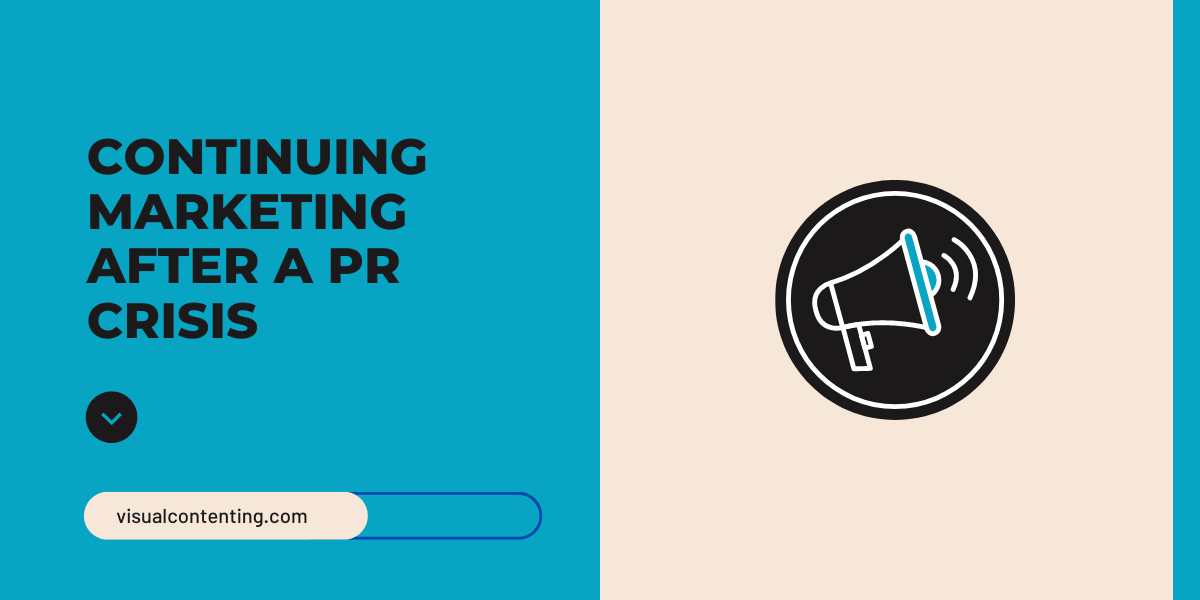Companies can recover from public crises and scandals if they take appropriate, well-informed measures moving forward. Though situations may vary depending on the nature of the problem, the steps for potentially reascending to former public status are constant.
With delicacy and patience, these tangible actions could encourage any entity to overcome a public relations nightmare — not all publicity is good publicity, but it can be.
Proactivity in the Face of Crises
There is art in the issue of an honest apology with promptness. The same steps apply to a solopreneur or a global enterprise. A business does not want to be too hasty to have an incomplete strategy, but waiting too long to address it could cause public concern.
Unknowns and “no comments” cause the public to spread rumors or even greater fears depending on the crisis. After all, misinformation is likely to spread six times faster than truthful information.
PR teams should prioritize delegation, such as who will draft a public statement or how to control social media monitoring. Utilizing the public discourse surrounding the crisis could help formulate an appropriate response since it could highlight what the public is most concerned with receiving answers about.
Despite the negative critique, the plan should persist instead of spiraling into a negative media whirlwind. This could cause misdirection and lashing out during a recovery strategy, resulting in poor outcomes.
Acknowledging the mistake is not valuable to the public if they do not receive concrete examples of how the company intends to rectify the situation. Coca-Cola is one of the most famous examples of how public complaints superseded company pride. After a branding blunder, it chose to value the customer’s opinion over its own, reverting to the old formula.
Emulating this strategy could begin rebuilding the business-customer relationship since the public can hold the company accountable. If this is well-finessed, post-scandal damages could be minimal.
Though the response is critical, the most important way to continue marketing after a PR crisis is to use it as a springboard for continued change. Despite the democratization of social media, it can just as equally perpetuate misinformation and inequality as provide safe havens for companies to flourish again. Business actions influenced by the initial statement will carry more gravity than the statement itself.
Installation of Preventive Measures
Awareness and training are the cornerstones of continuing after bad publicity. Knowing examples of small and large mistakes that could cause an uproar from the public will assist everyone within a company — since some may not perceive all mishaps as equally consequential. These are only a few of the potential catalysts for a scandal:
- Poorly timed social media posts
- Making insensitive comments
- Uncouth responses to customer reviews
- Not admitting to oversights
- Exposure of personal or corporate secrets or crimes
- Inappropriate response to breaches or outages
- Failing to recognize inadequacies in a sector
- Ignoring natural disasters or global tragedies
- Questionable behavior against company ethics and image
Most companies have business continuity plans for unexpected disasters and can take similar actions for bad PR, like social media crisis communication plans.
Will the PR team delete potentially abusive comments, or will this raise even more concerns, as it would appear the company is trying to control the narrative? Do certain employees’ accesses need to be removed to prevent further damage? It’s best to halt any scheduled content to prevent the public from misconstruing social activity as a dismissal of the scandal.
To avoid crises, companies must have multiple eyes on all materials, publishable and spoken, before distribution. Some are incorporating entire teams into their business models, including tabletop and trading card game giant Wizards of the Coast, which began requesting the aid of sensitivity readers to scan for cultural and racial insensitivity. Incorporating this mentality into employee training will further inclusivity efforts.
There are other ways to incorporate third-party aid to increase image rehabilitation efforts. A company can use consultants or researchers to deepen its knowledge in being more comprehensive and inclusive.
This also means realigning brand voice because any changes from above must trickle down to employees. Inconsistency is a red flag, alarming executives that employees are unfamiliar with representing the business. A worker’s ignorance may not result in a PR scandal. Still, the behavior represents the qualities visible in those who instigate them, like lack of attention to detail and employer commitment.
When considering crisis plans and training materials, the best strategy is documentation. Poor documentation of progress or process improvements could incite a lack of clarity and increase security risk if scandals reoccur.
Maintaining Business Relationships
The tangible, internal measures businesses take to recover from a scandal only heal part of the story. Relationships between customers, employees and stakeholders could be in jeopardy. Every implementation has been behind an intention of trust, and there are ways to continue that practice past management shifts and structural changes.
Demonstrating growth mindsets helps repair broken trust. The more proof a company shows it grew from the negative publicity, the better — it reveals a willingness to see failures as opportunities. The grace required to continue business as usual post-scandal is a test of maturity and stability in the sector. Reflecting and reporting on the effectiveness of the recovery plan will provide the insights a company needs to develop.
Rebuilding trust is a careful balancing act because a company must simultaneously remind customers why they provided patronage in the first place — while not bragging too much as a means to conceal the scandal entirely. If an organization that claims to be environmentalist releases a product with harmful materials, the business strategy would be first to recreate or recall that product. It’s then vital to regain customer trust by reminding them of third-party green certifications and product plans for creating a more sustainable alternative.
It will also show employees and the public how the business is better because of it. Examples of demonstrating growth could be implementing new analytics technologies to assess customer perception. This could work alongside scheduled assessments of customer life cycle-framed reporting to identify growth opportunities. A company could also adjust its hiring practices for more diversity, researching smarter ways to perceive its workforce.
As younger generations become the predominant consumers, it’s vital to understand customer perceptions of corporations to survive. Accountability is the game-changer, and with the proliferation of media because of the social internet, it’s easy for them to keep tabs on the progress trail — especially one already laden with cynicism. Knowing this will guide enterprises to more authentic avenues for redeveloping customer relationships because they take the time to understand demographics.
Social listening is a powerful tool to show a company that its offerings aren’t a one-way street — they’re customer-centered. Keeping communications open and transparent can provide relief to previously unsettled patrons. Humanizing a customer base dramatically reduces the risk of scandal because personal connections will add more considerations. It’s intimidating yet priceless to ask for feedback.
Rebuilding a Brand Is Possible
Countless companies thrive off a positive reputation, using customer loyalty and business personality to stay profitable. It’s critical to address PR crises thoughtfully, but it’s more important to instill long-term changes to prevent future issues. Methods exist to rebuild a brand and redevelop public trust, and so long as it is well-intentioned, any company can restore itself to keep business booming.
Related Posts
Devin Partida writes about topics concerning tech and the internet. She is also the Editor-in-Chief of ReHack.com.







